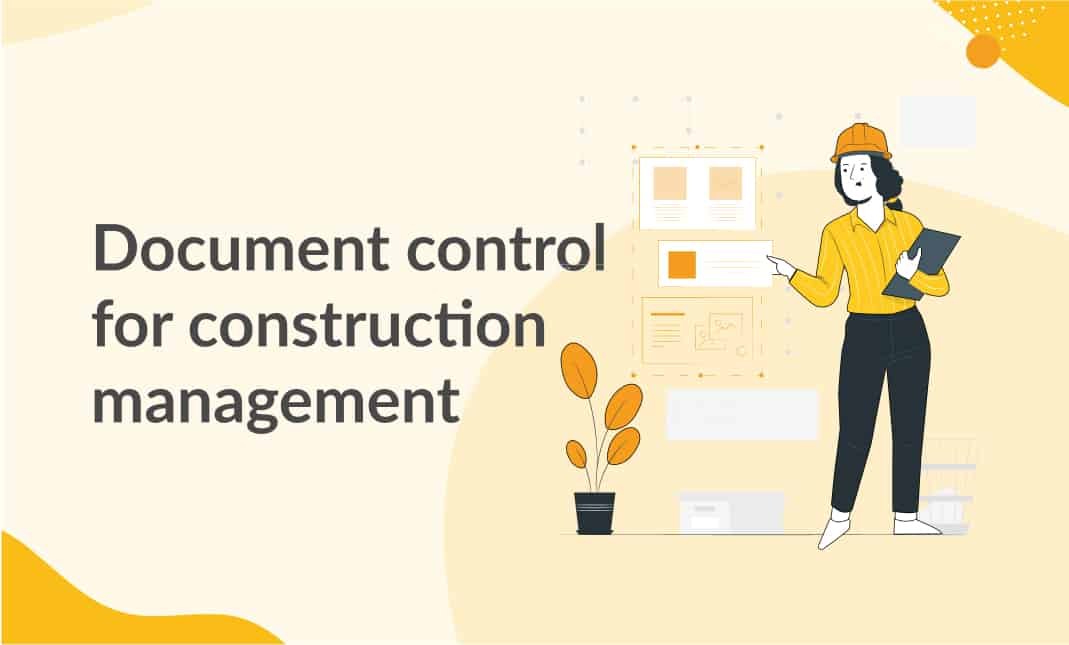Elevate Your Job Management: Construction Document Management Tools You Required
Elevate Your Job Management: Construction Document Management Tools You Required
Blog Article
Enhancing Operations Effectiveness: Architect's Professional Methods for Construction Record Administration
In the realm of building style and building, the precise administration of files stands as a cornerstone for project success. These techniques not only guarantee smooth project progression but also hold the essential to unlocking improved productivity and precision in the intricate realm of building and construction record monitoring.
Trick Paper Company Methods
When managing construction documents, among the crucial methods that designers employ is developing a effective and systematic company system. This system generally involves classifying papers based on their type, such as illustrations, specs, contracts, and allows. By developing clear and unique classifications, designers can rapidly locate certain info when required, conserving time and reducing mistakes in the building process.
Within each classification, architects additionally arrange files by producing subfolders or making use of numbering systems to signify versions or modifications (construction document management). This ordered structure makes certain that the most pertinent and existing information is easily accessible while maintaining a record of modifications made throughout the task timeline
In addition, engineers commonly use digital paper administration systems that use attributes like keyword search features, variation control, and gain access to constraints to boost company and cooperation amongst task stakeholders. These devices enhance the paper access process, promote real-time updates, and help with seamless communication, eventually adding to the general success of the building project.
Collaborative Platform Integration
To maximize record monitoring effectiveness in building projects, architects flawlessly incorporate collective platforms to enhance interaction and enhance sychronisation among task stakeholders. By leveraging joint platforms such as project monitoring software program, cloud-based storage systems, and communication devices, designers can create a central hub for all project-related files and interaction networks. These systems allow staff member to gain access to, evaluation, and collaborate on records in real-time, lowering hold-ups and the danger of errors related to conventional document monitoring techniques.
Collective system integration likewise fosters transparency and liability within the project team, as all stakeholders have presence into the current task updates and revisions. By streamlining interaction and record sharing, architects can guarantee that all team members are working from one of the most current information, reducing the possibilities of conflicts or misunderstandings occurring because of obsolete files.
Furthermore, collaborative platforms allow seamless partnership between designers, service providers, clients, and other project stakeholders, promoting a more reliable and cohesive task workflow. By damaging down interaction obstacles and facilitating information exchange, architects can drive productivity and technology in building and construction tasks, inevitably bring about effective task results.
Variation Control Finest Practices
Carrying out efficient version control practices is important for maintaining document precision and consistency in construction jobs. By developing a clear system for taking care of revisions, task groups can guarantee that everyone is functioning from one of the most up-to-date documentation, reducing the danger of mistakes and inconsistencies throughout the building and construction stage.
Among the key ideal methods for variation control is to appoint special identifiers to every file version. This can be attained by utilizing a numbering system or date stamp that clearly shows the order of modifications. By plainly identifying each iteration, group members can conveniently track the development of the document and recognize one of the most recent variation.

Automation Devices for Effectiveness

Record control software, like Procore or PlanGrid, streamlines task documents, making it conveniently obtainable to all stakeholders. These systems enable real-time collaboration, version control, and automated backups, protecting against data loss. Additionally, Building Information Modeling (BIM) software application automates investigate this site the generation of building illustrations and makes sure that adjustments are integrated throughout all associated papers.
Integrating automation tools with cloud storage services further enhances accessibility and protection. By automating the paper monitoring process, project teams can concentrate their effort and time on value-adding tasks, eventually enhancing efficiency and project end results.
Secure Information Administration Solutions
Successfully protecting and taking care of project information is paramount in the building and construction industry to make sure confidentiality and stability throughout the task lifecycle. Architectural firms can make use of encrypted cloud storage services to firmly share and keep task files with accredited personnel.
Moreover, making use of digital rights administration (DRM) devices adds an added layer of security by stopping the unapproved circulation or replication of job papers. Normal data backups are necessary to mitigate the risk of data loss as a result of unanticipated conditions like hardware failures or cyber-attacks. Collective systems with integrated protection attributes enable seamless communication and file sharing among job team members while keeping data integrity.
Conclusion
In final thought, carrying out crucial record company strategies, incorporating joint systems, exercising variation control finest methods, making use of automation devices, and taking on safe and secure YOURURL.com information monitoring options are crucial approaches for boosting operations performance in building paper administration. These experienced approaches can simplify procedures, boost interaction, guarantee accuracy, and keep information safety throughout the building project lifecycle.
In the world of building style and construction, the thorough monitoring of records stands as a foundation for job success. These approaches not only ensure smooth task development however additionally hold the vital to unlocking improved productivity and precision in the elaborate world of building and construction record management.
To optimize paper management performance in construction jobs, designers effortlessly incorporate collaborative systems to improve interaction and enhance coordination among task stakeholders. These platforms permit team participants to access, testimonial, and work together on documents in real-time, minimizing delays and the danger of mistakes associated with standard document administration approaches.
Utilizing automation devices in building and construction file monitoring dramatically boosts performance and simplifies procedures for project groups. construction document management.
Report this page